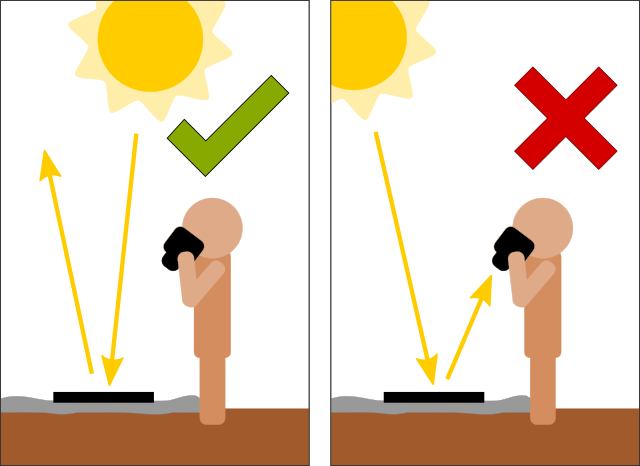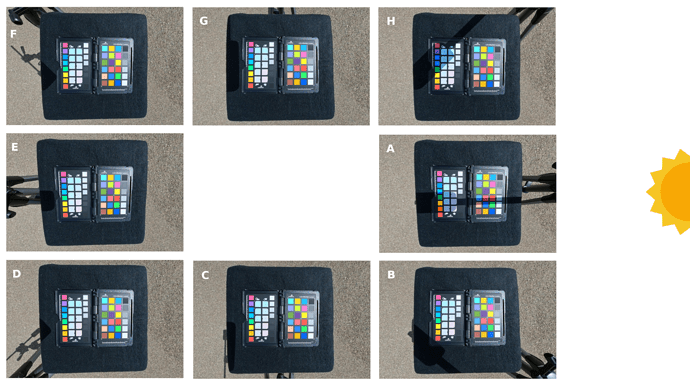I went out to a deserted parking lot around midday today, in order to shoot some raw images to be used to generate a DCP color profile. But once there, I realized I didn’t really know how I should place my target and camera given the current position of the sun.
So I set up the target and started with the tripod placed between target and sun (see A below) and then moved the camera around the target in 45° steps (see B to H below) on the assumption that one position would be the one I should have already known to use:
Above, I’ve added a sun, and laid out my shots such that I start with A (sun directly behind tripod) and work around from there in 45° steps (I hope that what’s happening is obvious anyway from the tripod legs, that you can see, and the resulting shadows).
On getting home, I looked at the “How to Create DCP Color Profiles” RawPedia page again. It includes this picture:

So my E image above looks like the bad  case (the target is between the sun and the tripod with the camera), whereas the middle ones (G and C) and the left ones (H, A and B) look like they could correspond to the good
case (the target is between the sun and the tripod with the camera), whereas the middle ones (G and C) and the left ones (H, A and B) look like they could correspond to the good  case.
case.
So which is the best setup? In a number of shots, the shadow is problematic but I could have resolved this by rotating and/or moving the target away from dead center. At the moment, I think B (with a little bit of rotation) looks nearest to the ideal of the RawPedia image. Or perhaps C or G?
What’s the expert take here from people who’ve already produced many such images for DCP color profiles?
This was the setup, I used - with the camera directly over the target (rather than off to one side as in the RawPedia image above):
The camera (an Instanta360 One X2) is attached at the end of a 15mm rod. If there are any obvious ways in which this setup should be improved (in addition to getting the correct angle to the sun), I’d appreciate any input.

